On page SEO is a fundamental pillar of search engine optimization that, when implemented correctly, can have a powerful impact on your website’s rankings, traffic and conversions. Ensuring that your site not only ticks all the on page SEO factors but does so effectively and strategically can be the defining factor in the success of your SEO.
In this comprehensive guide, we’ll walk you through all the strategies and techniques needed to optimize your website’s on page elements. Whether you’re new to SEO or looking to enhance your existing strategy, this guide covers everything you need to know. From understanding the basics of on page SEO to learning advanced optimization techniques, you’ll gain valuable insights that can drive real results.
Need help with your on page SEO? For a personalized SEO strategies, contact our team at Digital Edge International today.
What Is On-Page SEO
On page SEO (sometimes also called on site SEO) is the practice of strategically enhancing and optimizing elements of your website in order to rank higher in search engines, increase traffic to your site and improve user experience. On page SEO is one of the strongest and most effective tools you have in your SEO toolbox and is often the first step in optimizing your site. On page factors have the advantage of largely being under your control as a website owner or manager which makes them one of the easiest areas of your digital marketing strategy to address, but this doesn’t make them any less important.
How Do Search Engines Work?
The ultimate aim of search engines such as Google is to deliver the most helpful, relevant and informative result to a user’s search query. Google employs advanced algorithms covering a full spectrum of ranking factors to determine which sites to rank higher for a particular query. As search engine bots crawl your website, they look for particular indicators to determine the strength and relevance of your site as a potential resource to display. The more you clearly and specifically you can target Google ranking factors, the better your opportunity to be ranked at the top of the search engine results pages (SERPs).
It’s important to remember that Google’s algorithms are pretty smart. In days gone by it was common to see a site being over optimized to try to target and manipulate search results and as such Google have advanced their ranking algorithm significantly. There is a much stronger focus on user experience built in and attempting to unethically manipulate ranking factors is not only no longer effective, it can lead to hefty site penalization.
The Four Pillars of SEO
There are four fundamental pillars behind every successful SEO campaign – on page, off page, content and technical SEO. These pillars work together to build on and support each other and your overall SEO strategy and you will often find some crossover between them – for example structured data and page speed can fall under both the technical and on page umbrellas and content, while a pillar on it’s own, has a significant impact on your on page optimization. When planning and implementing your SEO plan, it’s vitally important to have a strong understanding of all four pillars and how they interact.
On Page vs Off Page SEO
On page and off page SEO are two of the four pillars that have the clearest distinction between them. On page SEO refers to the actions you take directly on your website pages such as keyword optimization in meta data, headings and content, optimizing images and structuring internal links. Off page SEO on the other hand, refers to actions that are taken outside of your website and includes factors like backlink building, citations, social media and PR.
On-Page SEO Fundamentals
Now that we’ve covered the basics of what makes on page SEO important, let’s dive into the specifics of on page SEO strategies. On page SEO is not just one technique, instead, it involves addressing and enhancing multiple elements within your website to create a greater overall result.
Keyword Research
Keyword research sits at the core of your on page SEO efforts. Keywords form the basis of the queries your target audience are typing into Google or other search engines when looking for – well, pretty much anything from general information to specific products and services. Identifying the most relevant keywords therefore enables you to target these in your on page SEO, indicating to both Google and your intended audience that your website is a good fit for these specific queries.
When determining the best keywords to target in your campaign it’s important to look at both search volume and search intent. Conducting thorough keyword research allows you to identify high volume keywords (those with a higher number of searches indicate that these are the most commonly used terms for the topic you are focusing on). Once you have a created a list of high volume keywords, it’s always a good idea to type these into a search engine and see what kind of results come up – are these in line with the information you are presenting or the product or service you are promoting? While targeting high volume keywords will ultimately give you access to a bigger audience, if the keywords you select are not in line with user intent, they may not be the best option. Often you can see just as strong results by using a slightly lower but more relevant and specific keyword, so choose carefully.

Meta and Headings
Meta data is a way of quickly and succinctly letting Google and your audience know what each of the individual pages in your website is about. Meta data includes both meta titles and descriptions, and search engines display both of these in SERPs
- The meta title is the title of your page shown in search engines, it also appears as the page title in the tab on your web browser. The title tag does not have to be the same as the main heading on your page (though they should be closely related) and is one of the more specific areas for keyword optimization.
- The meta description is the short summary of what your page is about that sits below the meta title in SERPs. Meta descriptions are not directly used as a Google ranking factor, however they can influence the click through rate (CTR) and a higher CTR indicates to Google that your page is a strong resource.
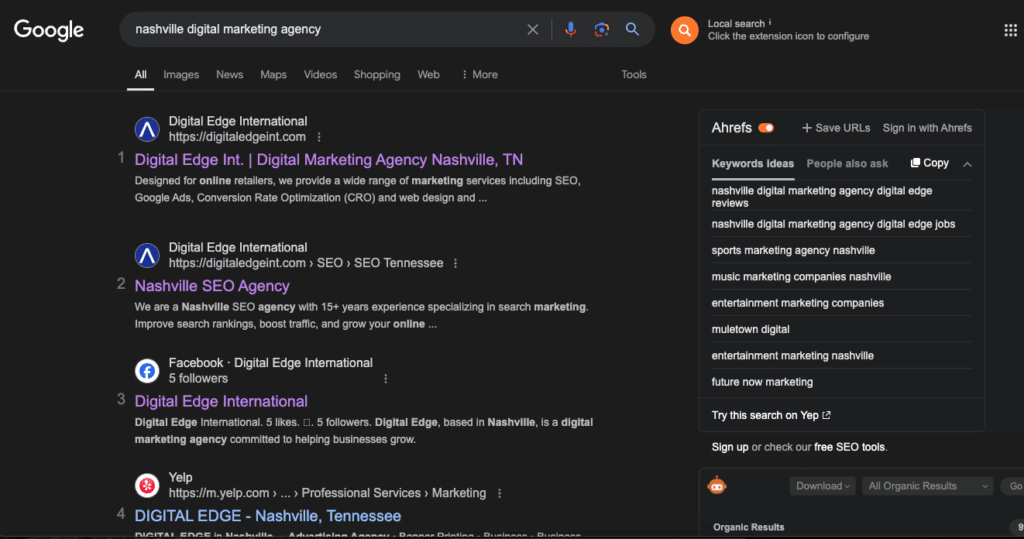
Headings are also used by search engines to quickly determine the relevance of your page’s content. Search engine crawlers will scan your page to get an overview of how helpful your content is and a well structured page with clear, organized headings make it easier for both Google and your readers to navigate. The most important heading on your page is the H1 which describes the overall page subject and should be optimized with your primary target keyword. H2 – H6 headings are then used to break up the information within the body copy and should be structured in a logical hierarchy for best results.
Image Optimization
Including images in your pages offers several benefits. Firstly, from a user perspective, images add visual interest to a page and help to break up lengthy copy. Images can also be used to showcase facilities, products or team members, adding an additional layer of information and context to your content.
From a purely SEO perspective, images can also be used to support your keyword focus. Including relevant keywords in image filenames, titles and alt text provides extra opportunity for keyword usage and, if your page includes unique and helpful imagery, also increases your chances of ranking in Google images. Image alt tags also contribute to making your site accessible to screen readers which is an important factor when considering ADA compliance for your website.

Internal Links
Internal linking involves building a network of links between the internal pages of your website that help search engines and users understand how the pages relate to each other. An internal link is simply a hyperlink within page content, linking to another relevant page, usually via keyword optimized anchor text. Adding internal links does involve some consideration to get the best results – it’s not always simply a case of more links being better – but when used well can make a significant difference to your on page strategy.
External links are another important on page linking factor to consider. External links still refer to hyperlinks added within your content, but these link to external sites and are used to build trust and authority. Linking to high quality, relevant external sites such as industry bodies or authoritative resources can elevate and enhance your position within your particular niche and increase the perceived reliability of the information you are presenting.
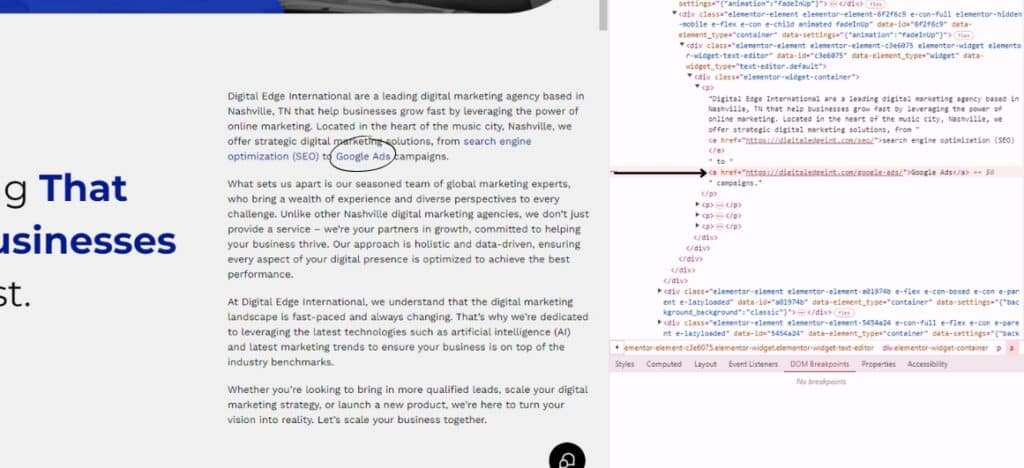
Optimized Content
High quality content should be the cornerstone of any website – at Digital Edge, we treat content strategy as an SEO pillar on it’s own – but content also plays an important role in on page SEO. When creating content for your web pages you should always focus on writing useful and helpful content that provides value to your readers first. Related keywords, when used naturally throughout your content will support your page’s relevance and contribute towards your rankings, but when used poorly through keyword stuffing or irrelevant keyword inclusion can work against you.
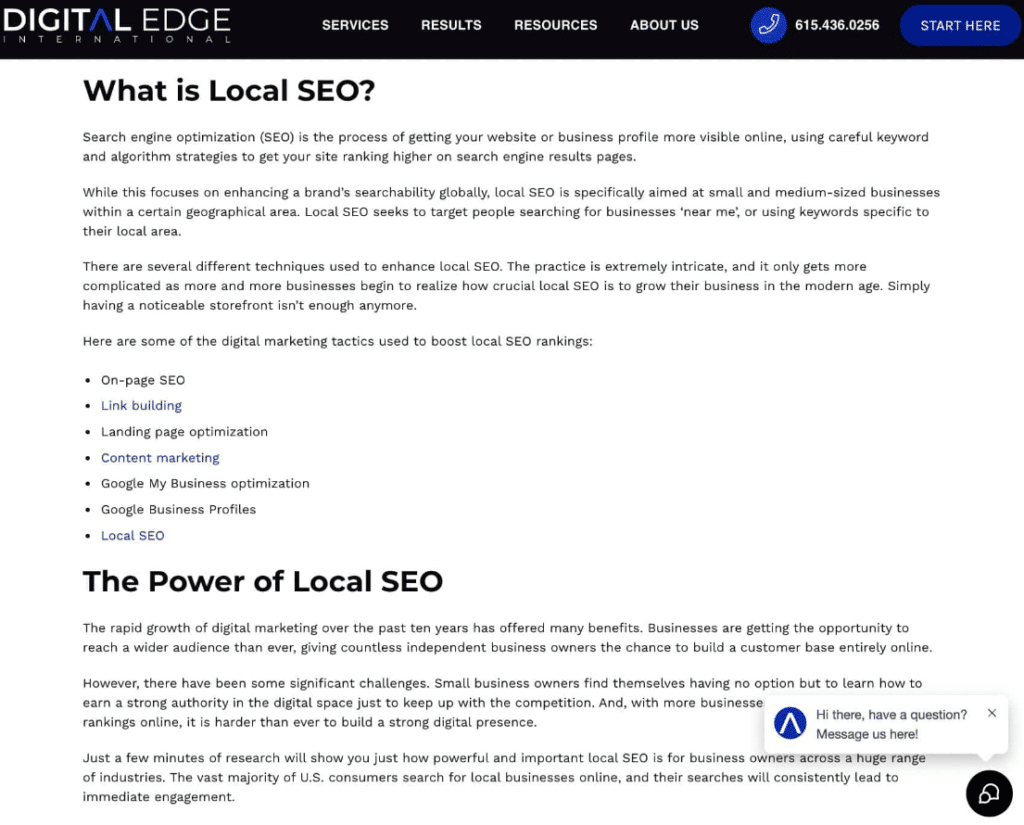
URL Structure
Like internal links, your URL structure plays a clear role in helping both search engine crawlers and users navigate and understand your site. Your URL structure should be clean and intuitive, giving an indication of both what the page itself is about, and where it sites in relation to other pages on your website.

Key On Page Optimization Tips and Techniques
So, how do we effectively utilize these on page SEO elements? Below, you’ll find our on page SEO checklist, a quick step by step guide on how to optimize your pages, increase your search rankings and boost your organic traffic.
Write keyword focused meta titles and descriptions
Meta titles and meta descriptions are your first opportunity to make a strong impression in search engine results pages (SERPs). They serve as a brief introduction to your page’s content, helping users decide whether to click through to your site. While meta titles directly impact your search engine rankings by signaling the relevance of your page to search queries, meta descriptions play a vital role in encouraging clicks by providing a compelling snapshot of what users can expect from your content.
Crafting effective meta titles and descriptions requires a balance between keyword optimization and user engagement. It’s important to use your primary keywords strategically while also creating titles and descriptions that resonate with your audience. By doing so, you not only improve your chances of ranking well in search results but also increase the likelihood that users will choose your link over others.
Write a keyword targeted meta title
Your meta title is one of the first and most important on page SEO factors. Your meta title should provide a clear and concise indication of what the page is about and should include your primary target keyword. Google only allows a limited amount of space for a meta title so aim for 50-60 characters to avoid your title being cut off in SERPs.
Write a click driven meta description
The main purpose of your meta description is to entice users to click through to your site. Including your primary or secondary keywords in your description is still a good idea, even without these directly contributing to rankings, as Google will bold these in SERPs, helping to show how your page is relevant to the user’s search query. Limit your meta description to 150 – 160 characters to ensure the full text is displayed in SERPs and try to include content that grabs the readers attention and makes them want to find out more.
Optimize your headings and page structure
Headings and page structure are fundamental elements of on-page SEO that influence both user experience and search engine understanding. Properly optimized headings not only help users easily navigate through your content but also provide search engines with clear indicators of the relevance and hierarchy of the information on your page.
An effective heading strategy starts with a strong H1, which serves as the main title of your page and should clearly convey the primary topic of your content. Following the H1, a well-structured hierarchy of subheadings (H2 through H6) allows you to break down your content into manageable sections, each with its own focus.
Create an effective H1
The H1 tag is the main heading on your page and, like your meta title, should indicate what the overall content is about. Your H1 should also include your primary keyword and should be unique for each page on your site. There is some debate about whether multiple H1 tags are acceptable but for SEO, we would always recommend only including one H1 heading per page to clearly state the subject of the content.
Structure your page with headings and subheadings
Using a clear hierarchy of headings (H2 – H6) helps both users and search engines navigate your content. Break your content into sections with descriptive subheadings, utilizing your primary and secondary keywords, to guide readers through the information logically. This not only improves readability but also helps search engines understand the structure and key points of your page. There are no limit to the number of subheadings you can include on a page so use as many as you need.
Add and optimize images
By carefully selecting and optimizing images on your website, you can support your on-page SEO efforts, improve accessibility, and even increase your chances of appearing in image search results. Properly optimized images can help your content stand out, providing a richer experience for users and more signals for search engines to understand the context of your page.
Use original images
Stock images provide a quick and easy option for sourcing professional looking images but they add very little value to your page. Wherever possible, try to create original images. Whether that means photographing your team, facilities or products or designing custom graphics to illustrate your data, original images create a sense of connection with your audience and increase the unique value of your content.
Add alt text and title tags
Image alt text should be added to all images that form part of the page content (decorative images that are part of the website design do not need alt text added as they are only for aesthetic purposes). For SEO purposes, the alt text should include relevant keywords but should also describe the image accurately for use by assistive browser technologies. Title tags are displayed when a user hovers over an image and can also be used to add context and keyword relevance.
Include internal and external links
By strategically incorporating internal and external links into your content, you can guide both users and search engines through your site in a way that highlights the most valuable pages and builds trust in your content. Effective linking not only improves the flow of your website but also contributes to better indexing by search engines, which can lead to higher rankings.
Add internal links
When creating an internal linking strategy, start by considering the structure of your website and the importance of each of your pages. You should aim to include a higher number of internal links to the most important pages in your site to indicate their value and create higher page authority. It can also be helpful to map the linking between your pages before updating your website to ensure that all relevant top level and subpages are interlinked in a way that clearly shows how they relate to each other.
Linking your pages via keyword rich, relevant anchor text helps users and search engines understand the relationship between pages, and what to expect when they navigate through. You should aim to include anchor text naturally in your content, and to create variation in the anchor text that points to each page so you not linking from the exact same term every time.
Avoid orphan pages
Orphan pages occur when a page in your website is not linked internally from any other page in your site. Without these links, search engine crawlers do not have a clear path to access and index these pages which can impact page authority, user experience and overall SEO performance.
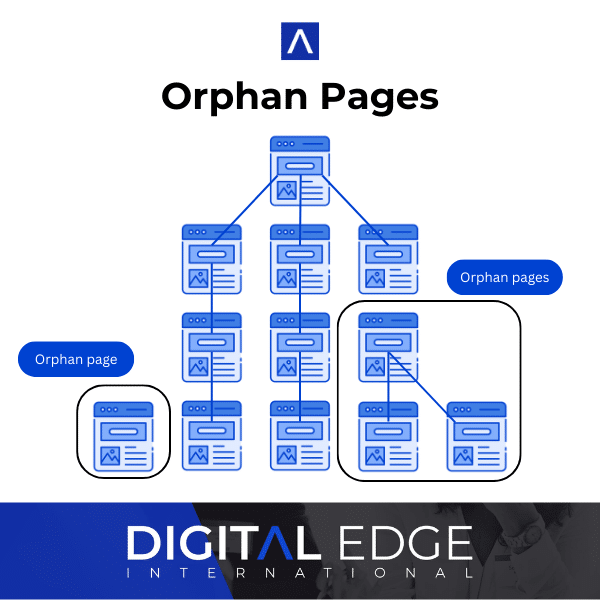
Include external links
Try to include one or more links to authoritative external sites in you page content. External links can be added when you quote another site, to reference a statistic or research, when you mention an association or industry body or to provide additional resources that your users may find helpful. Be sure to link only to reputable sites to enhance the trustworthiness of your content. Like internal links, external links should be added to relevant anchor text, be it related keywords, the name of the site or association, or a full sentence that accurately describes what the link is pointing to.
Write unique, relevant and helpful content
High-quality helpful content not only engages your audience but also signals to search engines that your website is a valuable resource worth ranking highly in search results. The focus should always be on providing genuine value to your readers, answering their questions, solving their problems, or fulfilling their needs. By doing so, you naturally increase the relevance and authority of your content, which in turn can lead to better search engine rankings and more engaged visitors.
Use your target keywords throughout the content
Incorporate your target keywords naturally throughout your content to signal its relevance to search engines. However, the key is balance – keywords should enhance the content, not disrupt its flow. If your content is well written and has high relevance to the keywords you are targeting (which it should), then you should have no trouble in weaving these keywords naturally and contextually throughout your writing.
Avoid keyword stuffing
Keyword stuffing is a practice that arose during the earlier days of SEO, when ranking algorithms were less mature than they are today. By “stuffing” a target keyword into a web page in abundance, SEOs figured their pages would appear more relevant and would therefore appear higher in search engine rankings. Google quickly worked this out and updated their technologies to detect unnatural keyword inclusion, but unfortunately this practice is still sometimes utilized by SEO agencies looking for a quick result. Keyword stuffing is now in violation of Google’s spam policies and may result in your content being removed from search results entirely.
Be aware of duplicate content
Duplicate content refers to content that is identical or very similar to content that appears on another page within your site, or an external website. Duplicate content often occurs when content is copied in its original form from a reference website or when identical content in a website is used on multiple pages. From an SEO perspective, duplicate content can cause several issues.
- Google prioritizes unique and valuable content and will often not rank a page that contains the same content that is available from another source
- Where duplicate content exists between pages in the same site, Google may not be able to identify which page is the best result and will rank all pages lower
- Pages with duplicate content are often removed from indexing altogether as they are seen not to be providing any value
To avoid duplicate content issues, ensure that each page on your website contains content that is unique and relevant. Remember also that duplicate content can include information that is similar in wording, not just content that is identical – if you have information that you want to include on more than one page, you should aim to write fresh content on the same point rather than simply spinning the wording.
Optimize URLs
Your URL structure should be simple, descriptive, and reflect the content of the page. A well-structured URL is not only easier for users to read but also helps search engines understand the context of your page. Use hyphens to separate words in URLs and include relevant keywords where appropriate. A good URL shows where the page sits in context to other pages on the site and avoids using long strings of random letters and numbers.
| Bad URL Example | Why it’s bad |
| http://www.sampledomain.com/q?x=987&prod=654 | Difficult to read and lacks relevant keywords, making it ineffective for SEO. |
| http://www.sampledomain.com/produ%20cts%2F | Contains illegible characters, reducing its usability and clarity. |
| http://www.sampledomain.com/find?term=2 | Overloaded with parameters, creating a confusing and complex structure. |
| http://www.sampledomain.com/9f8e7d6c | Random string of characters that is uninformative and not user-friendly. |
| http://www.sampledomain.com/items/xyz456 | Long and awkward, making it challenging for users to navigate. |
| http://www.sampledomain.com/discount-offers-deals | Appears spammy due to excessive keyword use, potentially driving users away. |
| http://www.sampledomain.com/page2?source=main | Results in duplicate content, which can negatively impact search rankings. |
| http://www.sampledomain.com/items/xyz456 | Lacks descriptive terms, providing no context for users or search engines. |
| http://www.sampledomain.com/x%23%24y%25 | Contains special characters, making it difficult to read and understand. |
| http://www.sampledomain.com/product?id=1234 | Lacks effective keyword usage, resulting in a vague and unclear URL structure. |
Technical Considerations
Technical SEO is often regarded as a separate component of search engine optimization, but it has a significant impact on on-page SEO as well. Technical elements such as schema markup, site speed, and mobile responsiveness play a role in how well your content is indexed, ranked, and displayed by search engines. These factors not only influence your site’s visibility but also directly affect user experience and engagement. By addressing these technical considerations, you can ensure that your on-page SEO efforts are fully supported and optimized for maximum effectiveness.
Schema
Implementing schema markup helps search engines better understand the content of your pages and may help you achieve enhanced search results such as featured snippets. These rich results can increase visibility and improve CTR by providing users with more information directly in the SERPs. If you are a local business or organization, adding the relevant business schema can also contribute to your success in targeting local SEO.
Schema can easily be generated using free online SEO tools such as this schema markup generator, but make sure you also run your pages through Google’s Rich Results Test to verify the code is implemented correctly.
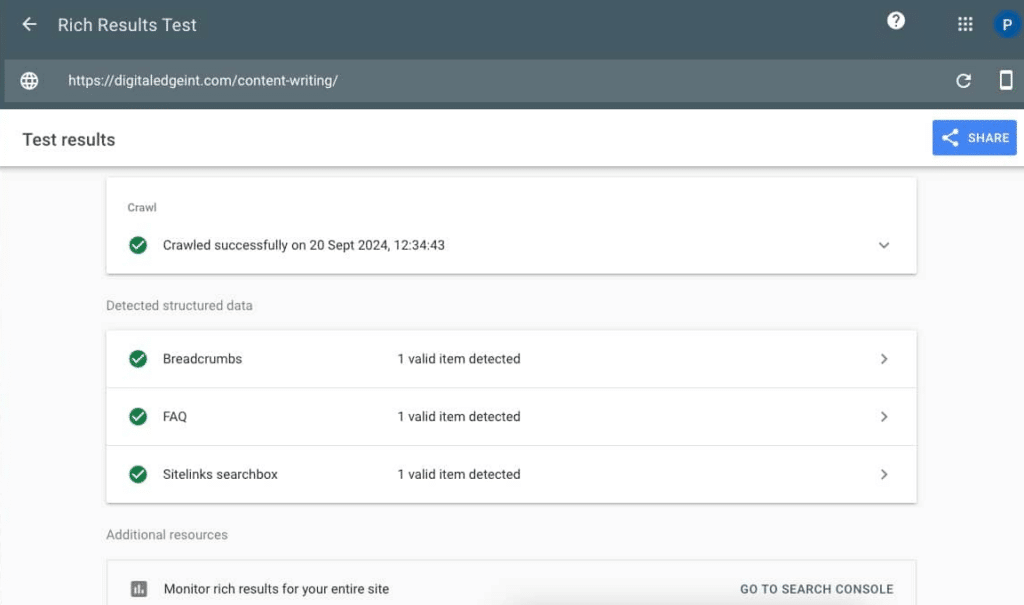
Site speed
Site speed is a crucial ranking factor and directly affects user experience. A slow-loading website can lead to higher bounce rates and lower search rankings. Optimize your site’s performance by compressing images, leveraging browser caching, and minifying CSS, JavaScript, and HTML.

Mobile friendliness
With the majority of searches now conducted on mobile devices, ensuring your website is mobile-friendly is essential. Responsive design, fast mobile loading times, and easy navigation on smaller screens are all critical components of mobile optimization. A mobile-friendly site improves user experience and helps maintain your rankings in mobile search results.
Master the Power of On Page SEO
Upping your on page SEO game is essential to the success of any successful SEO strategy, directly influencing your website’s ability to rank well in search engines, attract organic traffic, and convert visitors into customers. By thoroughly addressing each aspect on our on page SEO checklist – from keyword research and meta data optimization to internal linking and content creation – you lay a strong foundation for your site’s long-term success.
If you’re looking for expert guidance or a tailored SEO strategy, our team at Digital Edge International is here to help. Reach out to us today to elevate your online presence and achieve your business goals.



